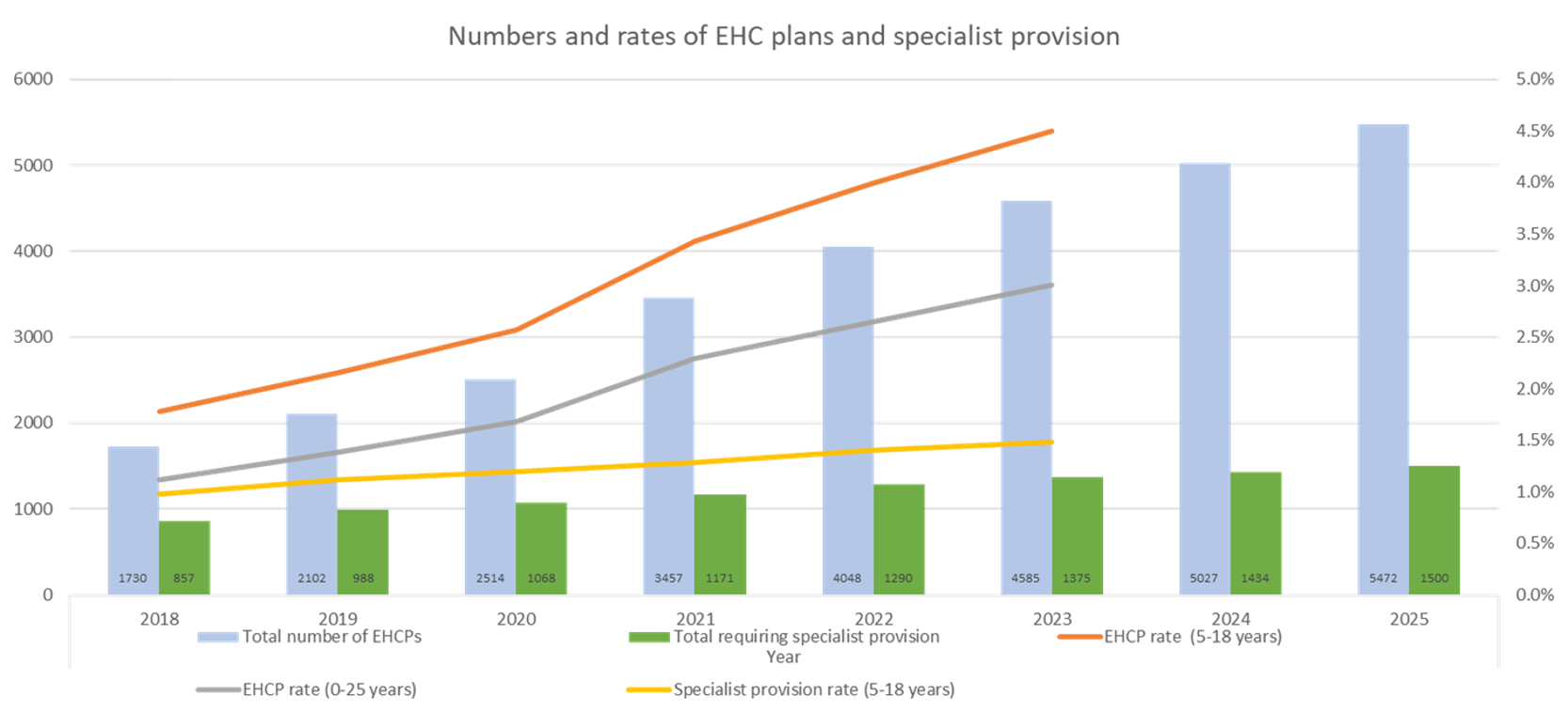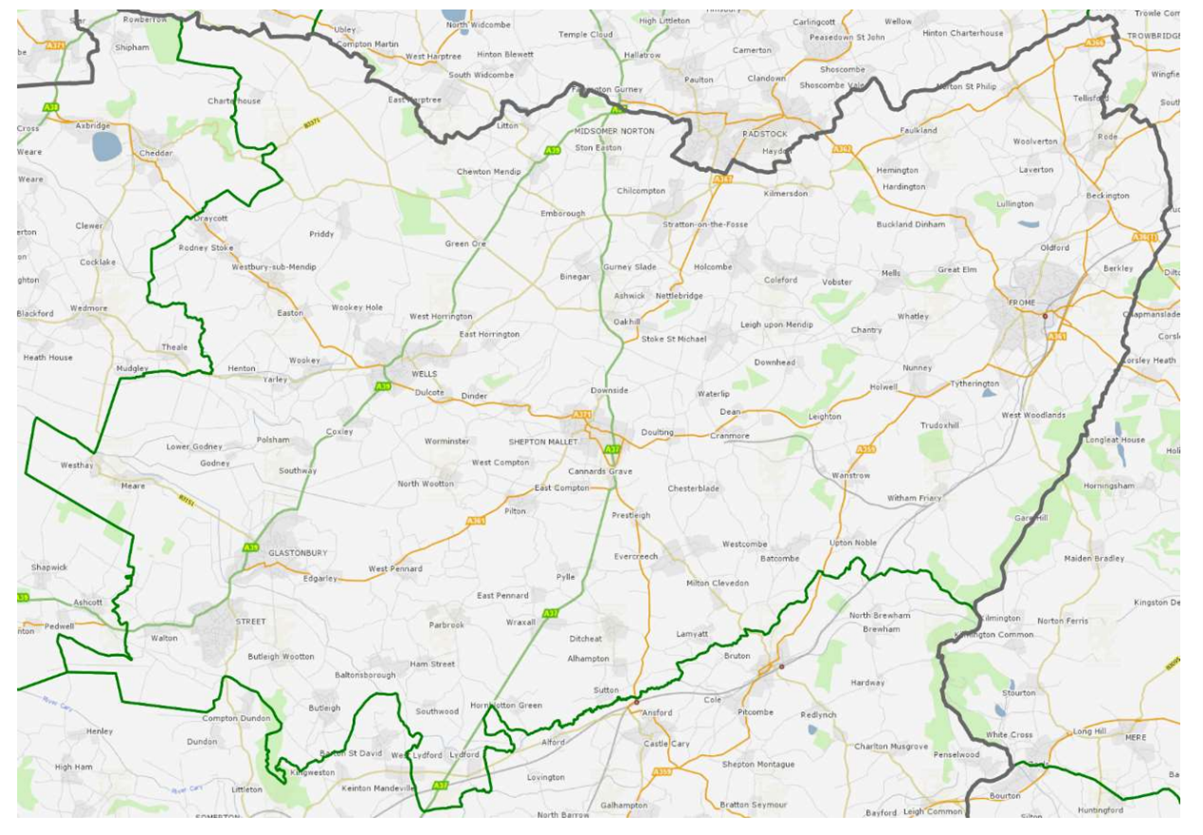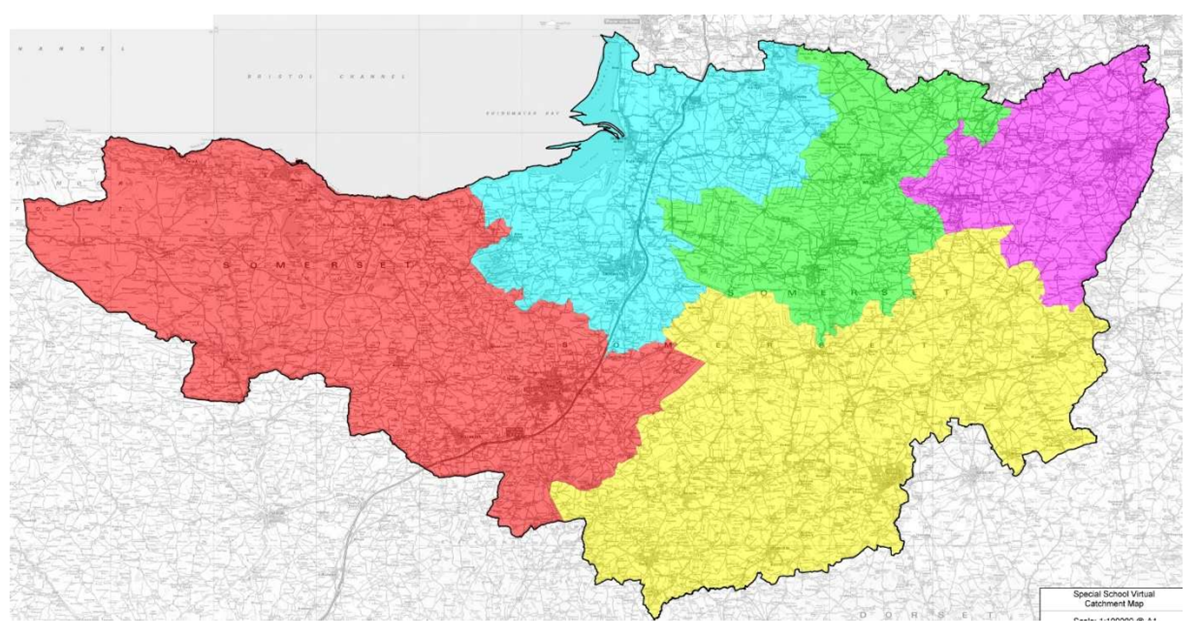Overview
The Department for Education is inviting applications from proposer groups to open a new special free school in Somerset.
Applicant groups can access the key school specification information, along with the full How to apply to set up a special free school – GOV.UK guidance. You should read these pages carefully before completing mandatory pre-registration.
The school specification document sets out the key factual details about the proposed school, including the proposed size, SEND designation, age range, suggested top-up funding, and proposed site.
The Department for Education will publish the key facts about each approved school in a standardised way on GOV.UK. This will ensure that all applicants have access to the same information from a central point, available at Apply to open a special free school.
This page provides applicant groups with additional contextual information provided by Somerset Council, which includes:
- The rationale, context and need for the school;
- Details on the commissioning of places, including the involvement of any other Local Authority commissioning places;
- A brief description of the existing provision in the area;
- Future expected growth in pupil numbers; and
How the Local Authority expects places within the school to be filled.
Rationale, context and need for the school, including proposed commissioning arrangements
Somerset has around 78,000 children of statutory school age. Of these:
- 69,000 are in state-maintained mainstream schools
- 1300 in specialist provision
- 1500 are electively home educated
- 6000 are educated in independent schools
3000 (3.8%) of Somerset’s school-age children have Education, Health and Care Plans (EHCPs).
Somerset has experienced a significant growth in the number of EHCPs it maintains, this is due, in part to having historically been a low statementing authority and has had to issue a significant number of EHCPs to children who benefited from high needs funding.
In parallel, demand for EHCPs for school-age children has increased (as seen nationally) and is projected to keep increasing.
Having had a school-age EHCP rate of 1.6% in 2018, it is projected to reach 4.5% by 2023. As such, the number of children requiring specialist provision has grown and projections indicate that in 2025, 1500 children and young people will require specialist provision, up from 857 in 2018:

Of those of statutory school age (4-16) children currently with an EHCP, around 1300 are in special schools with 1100 children in state-maintained provision and 200 in Independent & Non-Maintained Special Schools (INMSS).
Independent places are on average £30,000 a year more expensive than state-maintained special school places.
In response to this demand, Somerset has invested £56m in specialist provision capital projects, delivering over 300 additional places by building new or expanding existing special schools and resource bases:
| Type of provision | 2018 | 2019 | 2020 | 2021 | 2022 | 2023 | 2024 | 2025 |
|---|---|---|---|---|---|---|---|---|
| Type of provisionResourced provision or SEN units | 201842 | 201967 | 202087 | 202199 | 2022129 | 2023125 | 2024138 | 2025138 |
| Type of provisionMaintained special school / academies | 2018633 | 2019709 | 2020758 | 2021823 | 2022917 | 2023951 | 2024965 | 20251,049 |
| Type of provisionHospital schools or Alternative provision | 201819 | 201938 | 202030 | 202139 | 202244 | 202349 | 202452 | 202557 |
| Type of provisionNMSS or independent schools | 2018163 | 2019174 | 2020193 | 2021210 | 2022200 | 2023250 | 2024279 | 2025256 |
| Type of provisionTotal | 2018857 | 2019988 | 20201,068 | 20211,171 | 20221,290 | 20231,375 | 20241,434 | 20251,500 |
Somerset was also successful in the 2019 Free School Competition and that 120 place school for children with Social, Emotional and Mental Health (SEMH) and Speech, Language and Communication Needs (SLCN) will open in South Somerset in January 2024, having originally been scheduled to open in September 2022. That delay has led to Somerset continuing its over-reliance on INMSS placements and an associated increase in Somerset’s cumulative high needs deficit.
This new special free school proposal is shaped around Somerset’s aspiration to balance its special school offer and ensure children in the Mendip area with SEMH and SLCN can be educated close to home in good quality provision.

Existing provision, expected future growth, and how new school places will be filled
Special School Place projections are calculated using data from 5 virtual catchment areas, each built around existing specialist provision. They are:
- Taunton & West Somerset (Red)
- Sedgemoor (Blue)
- Central Somerset (Green)
- Mendip (Purple)
- South Somerset (Yellow)

This new free school proposal is built around the projection data for the two virtual catchment areas which lie in the Mendip area; Central Somerset (Green) and Mendip (Purple).
The data projection exercise undertaken in 2022 shows the following level of demand for SEMH places in the Mendip area (Mendip and Central Somerset on the table below) that is difficult to meet (due to distance) in Somerset’s existing or planned state-maintained SEMH and SLCN special schools:
| Special areas | 2021 | 2022 | 2023 | 2024 | 2025 | 2026 | 2027 | 2028 | 2029 | 2030 | 2031 | 2032 | 2033 | 2034 | 2035 |
|---|---|---|---|---|---|---|---|---|---|---|---|---|---|---|---|
| Special areasSouth Somerset | 202195 | 202297 | 202397 | 202497 | 202597 | 202698 | 202799 | 2028101 | 2029102 | 2030102 | 2031103 | 2032104 | 2033104 | 2034105 | 2035105 |
| Special areasMendip | 202133 | 202233 | 202333 | 202433 | 202534 | 202634 | 202735 | 202836 | 202936 | 203037 | 203137 | 203237 | 203337 | 203437 | 203537 |
| Special areasCentral Somerset | 202130 | 202230 | 202330 | 202429 | 202529 | 202629 | 202729 | 202829 | 202929 | 203029 | 203129 | 203228 | 203328 | 203428 | 203528 |
| Special areasSedgemoor | 202178 | 202278 | 202379 | 202479 | 202579 | 202680 | 202781 | 202881 | 202982 | 203082 | 203182 | 203284 | 203384 | 203484 | 203584 |
| Special areasTaunton & West Somerset | 202189 | 202289 | 202388 | 202489 | 202589 | 202689 | 202792 | 202894 | 202997 | 203098 | 203199 | 2032100 | 2033101 | 2034102 | 2035102 |
| Special areasTotal | 2021326 | 2022327 | 2023328 | 2024328 | 2025328 | 2026329 | 2027336 | 2028341 | 2029346 | 2030348 | 2031351 | 2032354 | 2033355 | 2034357 | 2035357 |
| Special areas | 2021 | 2022 | 2023 | 2024 | 2025 | 2026 | 2027 | 2028 | 2029 | 2030 | 2031 | 2032 | 2033 | 2034 | 2035 |
|---|---|---|---|---|---|---|---|---|---|---|---|---|---|---|---|
| Special areasSky Academy capacity | 202180 | 2022120 | 2023120 | 2024120 | 2025120 | 2026120 | 2027120 | 2028120 | 2029120 | 2030120 | 2031120 | 2032120 | 2033120 | 2034120 | 2035120 |
| Special areasMartock / Ash School capacity | 20210 | 20220 | 2023120 | 2024120 | 2025120 | 2026120 | 2027120 | 2028120 | 2029120 | 2030120 | 2031120 | 2032120 | 2033120 | 2034120 | 2035120 |
| Special areasTotal capacity | 202180 | 2022120 | 2023240 | 2024240 | 2025240 | 2026240 | 2027240 | 2028240 | 2029240 | 2030240 | 2031240 | 2032240 | 2033240 | 2034240 | 2035240 |
Our gap is in the provision of places for children living in Mendip whose SEMH and SLCN needs result in challenging behaviour. At present those children would have to travel out of their community to Somerset’s only maintained SEMH / SLCN school, Sky Academy in Taunton.
That journey takes at least an hour, pupils arrive frustrated and fatigued and are difficult to engage. Sky Academy can only accommodate boys, so girls have to be placed in independent and non-maintained provision across Somerset and over its borders into neighbouring counties.
Transporting children across the county also creates additional cost pressures for the Council, when compared to a child being able to attend provision in their local community. A typical cost difference would be £10,000 per child per year.
Again, this means children leave their local community for education, impacting on their ability to develop and maintain appropriate peer relationships. The relatively high cost of these placements puts additional strain on an already pressured high needs budget.
From January 2024 a new SEMH / SLCN Free School (Martock Ash Academy) will open, but again, this school is 20-30 miles from most of Mendip’s children. The distance creates a barrier for parents so their engagement with the school and their child’s education is limited, affecting outcomes.
This new free school proposal will see the delivery of a school right in the heart of Mendip, in a location which is easily accessible from Wells, Street, Glastonbury, Shepton Mallet, Frome and Cheddar.
Its location will mean no child with SEMH needs will have to leave their local community for education, reducing and removing barriers to engagement and associated costs.

